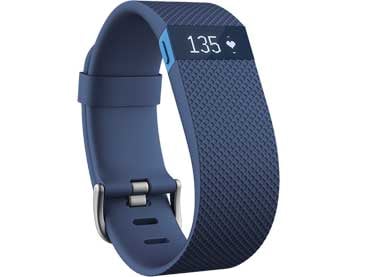
PRI GEN INT .EDINBURGH FGN10 AUTISM-TECHNOLOGY Wearable technology can change autistic people’s lives if they’re involved in designing it By Lauren Gillies-Walker, PhD researcher/Associate lecturer, University of the West of Scotland and Naeem Ramzan, Professor, University of the West of Scotland Edinburgh (UK), Aug 7 (The Conversation) Many autistic people experience difficulties in expressing their emotions. This can result in increased anxiety, depression, anger and physical health problems. Research shows autistic adults are significantly more likely to experience depression an anxiety than their peers. Imagine a future, where technology could help people regulate their emotions and alert them to sensory overload before they became overwhelmed. An increasing number of technological solutions, that aim to help people regulate their emotions are being developed for autistic people. And some autistic people are adapting technology such as digital heart rate monitors to try and track their stress levels. Many studies have explored autistic people’s use of wearable technology, such as smart watches, virtual reality (VR) or brain-computer interfaces (BCI) to regulate their emotions. BCIs are a direct communication pathway between the brain’s electrical activity and an external device, commonly a computer or robotic limb. Speaking to the community But before our study no one asked the autistic community for their views on how useful the technology is. Poor usability is a longstanding problem for autistic users of this technology because developers lack of awareness of their needs. A recent study found only 10 per cent of wearable technologies for autistic people addressed their needs and 90 per cent viewed autistic traits as shortcomings that need correcting. Our recent study explored the autistic community’s thoughts on any technology they had previously used to help them regulate their emotions and their views on what they need from technology. Thirty-four autistic individuals and their allies (family, health and social care professionals and college staff) took part in focus groups. We presented information on how emotional regulation technology could be used. For example, smart watches that detect physiological stress signals and prompt users to start coping techniques. We found the autistic community was keen to use technology to help regulate their emotions but it often cost too much, was difficult to use without training and wasn’t well adapted to their needs. Our focus group results showed wearable technologies could be uniquely beneficial to autistic people, if they are involved in the design process. Life with autism One participant shared how their daughter deals with emotional challenges: She looks perfectly fine and she’s behaving perfectly fine. Except she’s not. She hides it so well, the anxiety and everything that we haven’t got a clue! Sometimes the prodding can lead to a big explosion. Meanwhile care staff spoke about how important it was to understand how autistic people are feeling: You want to get in before the behaviour starts. Before it escalates. We could go in before to offer reassurance, a distraction. For other people it’s withdrawal. give them their own space. Another care worker said: We know there might be a pattern but we just can’t see it. Participants told us technology could make all the difference. A relative of an autistic person said: I’d like something that he can self regulate, tell people how he’s feeling. Something that’s an app that somehow connects with a colour, so he can pick a picture that says how he’s feeling and people know without it being a big song and dance. Some autistic participants felt there is a shortfall of support for those with higher IQ. One told us: You feel like you kind of walk between the two worlds almost. You’re not quite severe. So you’re not at that point on the spectrum where you need a lot of support that you’d get if you were. Help me, don’t fix me Most research has been based on out-of-date theories about autism, such as the idea it is a medical illness that can be cured or treated. Recent breakthroughs in the neuro-diversity movement triggered a call for autism research to focus on empowering autistic people and their unique communication styles instead of trying to fix them. Autistic participants agreed technological designs should promote independence, rather than try to mask autism. Many participants were reluctant to use technology due to lack of confidence in their ability to use it, especially within community care settings. Other barriers included cost or lack of awareness about existing technology. Our study results emphasised the importance of strategies that take an individual’s life goals into consideration. Although a lot of money is spent on developing new technologies, both researchers and healthcare organisations often fail to consider how it will be implemented in practice. As one autistic person, said: If you’re going to make something for someone ask them what they want. Don’t just spit out something and go here’s what I made. The amount of papers where people claimed to have made something for learning disabilities. Have you ever had it tested? Have you ever used it with anyone?” Technology companies must create their products alongside the autistic community. And products should aim to adapt the environment according to individual needs, rather than trying to change the person. Autism is simply a different way of seeing the world. Not only would this new approach help develop useful technology based support strategies, it would help to create more inclusive environments for everyone. (The Conversation) PY PY 08071010 NNNN
(Only the headline and picture of this report may have been reworked by the Business Standard staff; the rest of the content is auto-generated from a syndicated feed.)
Dear Reader,
Business Standard has always strived hard to provide up-to-date information and commentary on developments that are of interest to you and have wider political and economic implications for the country and the world. Your encouragement and constant feedback on how to improve our offering have only made our resolve and commitment to these ideals stronger. Even during these difficult times arising out of Covid-19, we continue to remain committed to keeping you informed and updated with credible news, authoritative views and incisive commentary on topical issues of relevance.
We, however, have a request.
As we battle the economic impact of the pandemic, we need your support even more, so that we can continue to offer you more quality content. Our subscription model has seen an encouraging response from many of you, who have subscribed to our online content. More subscription to our online content can only help us achieve the goals of offering you even better and more relevant content. We believe in free, fair and credible journalism. Your support through more subscriptions can help us practise the journalism to which we are committed.
Support quality journalism and subscribe to Business Standard.
Digital Editor



/cdn.vox-cdn.com/uploads/chorus_asset/file/25547226/1242875577.jpg)
/cdn.vox-cdn.com/uploads/chorus_asset/file/25546751/ES601_WEBR_GalleryImages_KitchenCounterLineUp_2048x2048.jpg)

